Yesterday Adam Harris and I made the two-hour run from Al Ahsa to one of the best areas in the Eastern Province for finding an interesting array of desert, grassland, and migratory birds.
We arrived to Haradh just past seven and headed directly to the pivot field where last year we had seen our primary target–Sociable Lapwing, a critically endangered steppeland breeder that winters in small numbers in Saudi Arabia.
That particular pivot had not yet been tilled for cultivation, so we explored a grassy pivot just beyond.
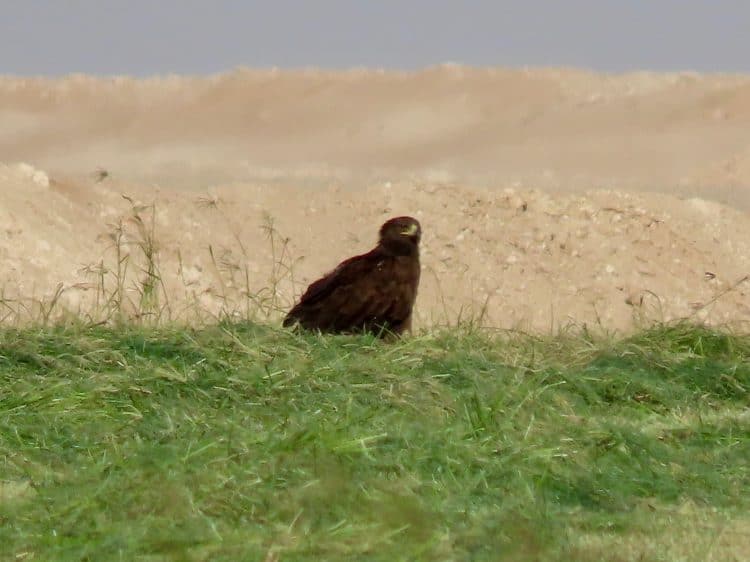
The grass there turned out to be quite long and unsuitable for lapwings; however, we did encounter our first of two Steppe Eagles, another endangered steppeland species wintering in Saudi Arabia, and our first of two Pallid Harriers along with good numbers of larks, pipits, wagtails, and wheatears.
A good thrash might have turned up a lot more but we hadn’t yet found our target so when we ventured on, scanning the roadside for promising fields.
Just a quick note here about Google Maps. Viewing the area in Maps and you’d think grassy cultivations abound; however, this is not the case.
In the corner where we were birding, we only managed to find five fields under active cultivation with all the others utterly bare and dry.
That said, the growing season in Haradh has only just begun and within the next two or three weeks there should be more.


On our way to investigate another promising cluster of pivots further south, we spied a green field just off the road where men were loading bright, rectangular bales of hay into trucks. Clambering up the steep, sandy berm encircling the pivot, functioning as both fence and windbreak, we scanned the section of the field beyond, which had been recently mown. There, in the short grass, I could make out the shape of lapwings, and their lighter color suggested they were likely Sociable and not Northern, whose number will grow quite large during the winter months.
Adam and I moved into position, closer to the lapwings and with the sun at our backs, in the hopes of capturing some images this time around. All in all we counted 17 Sociable Lapwing in a field that was also bursting with other bird life–Namaqua Dove were conspicuously abundant; four Cream-colored Coursers foraged along the edge of the pivot; Kentish Plover, seeming a touch out of place, flocked nervously just above the field before dropping nearly out of sight in the green grass; a Pallid Harrier, Eurasian Marsh-Harrier, and Eurasian Kestrel kept the smaller critters on edge as they circled, hovered, and plunged into the grass after prey; and again larks, pipits, wagtails, and wheatears filled out the ranks of passerines, with Crested and Greater Short-toed Larks being the most numerous.
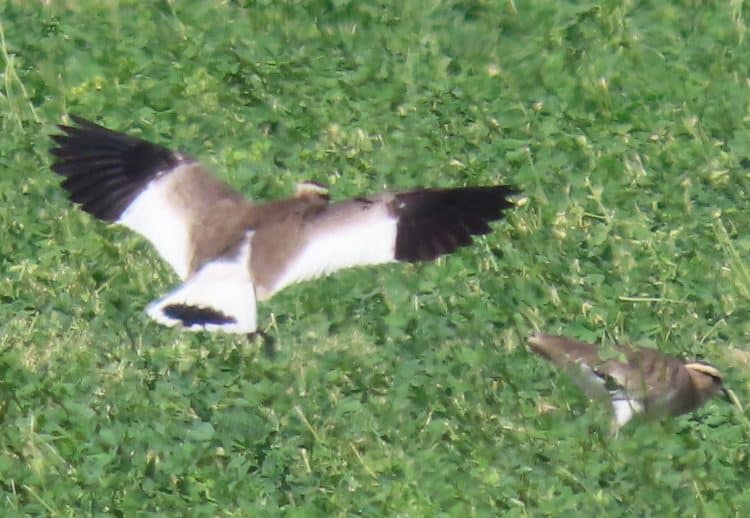
Birders and bird photographers in Saudi are advised not to share location details for any Sociable Lapwing flocks they may encounter on eBird, social media, or with anyone you in whose discretion and care for birdlife you are not 100% confident. This species, which breeds in the steppelands of Central Asia, is considered critically endangered due to dramatic and disturbing declines in its global population. It is estimated that the population now stands at little more than 10,000 individuals, a sharp reduction from historic numbers and a trend that has researchers alarmed.
While it’s not entire clear what has precipitated their drop in numbers, what is clear is that hunting, particularly in the Middle East, stands as a significant threat, not just to Sociable Lapwings, but all migratory birds passing through the region. Hunters, falconers, and bird trappers sometimes prowl observation-reporting sites like eBird or social media platforms like Instagram for information on where to find sensitive or threatened species.
In the Gulf, falconers have been known to offer farm laborers cash rewards for information on sightings of some of their most-sought after quarries, such as Eurasian Stone-Curlew and Houbara Bustard, so discretion with those who may be working around you is also advised. To learn more, check out BirdLife International’s data sheet on the Sociable Lapwing.

After confirming our count of Sociables and snapping my first shots of them in Saudi, we continued south to investigate that cluster of fields we pinpointed earlier. This turned out to be another rewarding stop. Just as we pulled up to edge of one of the two green pivot fields at the spot, a raptor flew in and landed on a stack of hay bales, offering us wonderful views and enough shots to help us distinguish it–an intermediate morph Steppe Buzzard–from the quite similar and more common Long-legged Buzzard.
This raptor appeared to move about a fair bit as I believe we encountered the same bird at two other spots during this stop. This was an exciting discovery as well, as this was the first time I had seen a Steppe Buzzard in the Eastern Province. They are a more common winter visitor to the mountainous western region of the Kingdom. Also present was our second Steppe Eagle of the morning, Greater Hoopoe-Lark and Black-crowned Sparrow-Lark among the abundant Crested and Greater Short-Toed Larks, and the sole Northern Lapwing of the day, apparently eager to be one of the first to return.
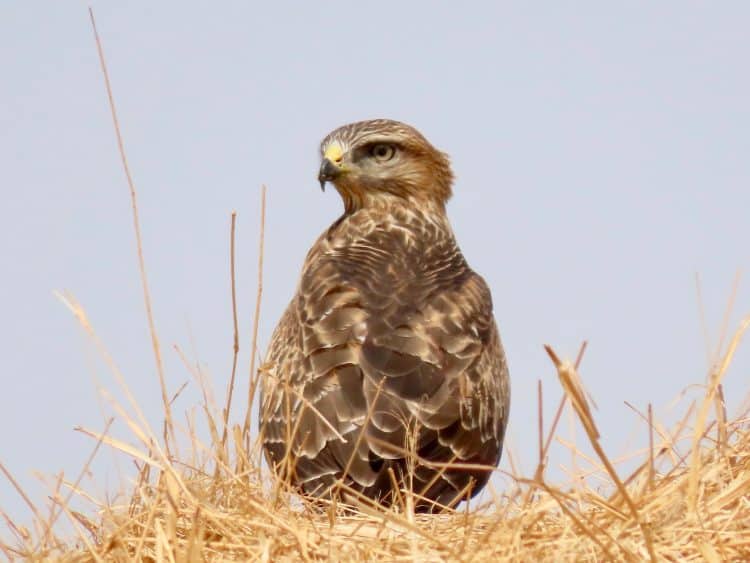

Before we knew it, it was almost time to start making our way back and we’d birded just four of the hundred plus pivot fields around Haradh. On our way back north, we stopped off at a spot outside the NADEC property line to check out two pivots that they had just started to water. Barn Swallows, White Wagtails, and Spanish Sparrows were relishing a chance to cool themselves and hydrate under the spray of the pivot irrigation arm, while a Steppe Great Grey Shrike shot from its perch at the end of the pivot to pounce on a grasshopper.
In this area a long line of NADEC’s pivot fields, looking like a beaded necklace in Google Maps, runs the center a wide, shallow wadi, in the bottom of which grow acacia and tamarisk trees. These are excellent for migratory passerines. As it’s a little late in the season, we didn’t turn up many migrants; however, a Sudani farm laborer told me that two weeks prior, when it was still hot, the trees around his farm were dripping with songbirds.
Adam and I did manage to see a late Turkestan Shrike, a Spotted Flycatcher, and three warbler species–Lesser Whitethroat (halimodendri), Asian Desert Warbler (actually a winter resident), and a handsome male Menetries’s Warbler in the wadi.
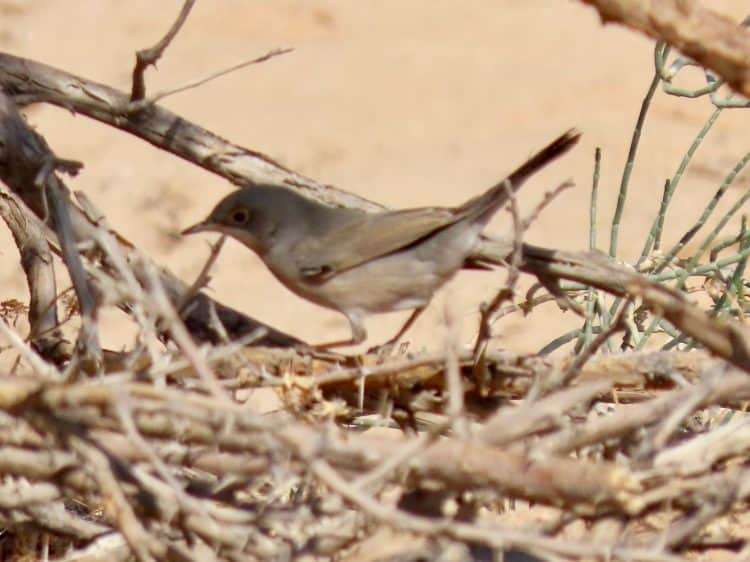
Thinking we were done for the day, we headed north but then decided to check out what appeared to be a wet area we noticed on the drive down. All we could see were phragmites leaves and fronds waving over the top of a berm and a couple water tankers waiting to unload what was surely treated wastewater. Figuring last second that we should at least give it a gander, Adam swung off the road and drove to the edge of the berm.
As soon as I stepped out of the car I could hear Black-winged Stilts and Little Stints, so I knew there had to be much more water behind the berm than we originally expected. Sure enough we struck the mother lode on water birds in what turned out to be a small, manmade wetland in the middle of the desert. I creeped closer to the edge of the berm and peered over the edge only to have my first Saudi White-tailed Lapwing among a half dozen other shorebird species peering back at me.
Excitedly I called Adam’s attention to the lapwing, a species whose occurrence in Saudi coincidently we’d been discussing on the ride down. Thankfully it stayed as a feathery explosion of stilts, stints, Ruff, and Wood Sandpipers burst into the air around it, allowing me to fire off a few shots before taking wing itself.
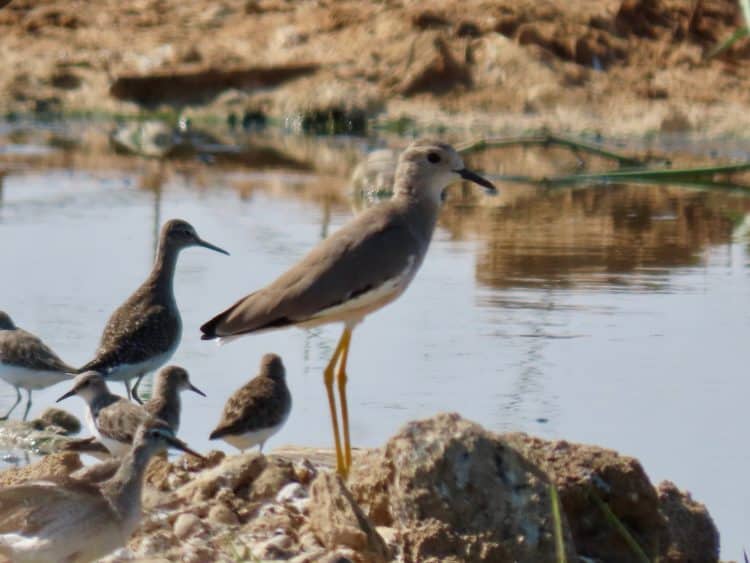
Perching ourselves at the top of the berm and scanning the wetland, we were amazed at the numbers and diversity of birds that had congregated there. We found our first Spur-winged Lapwings, making for an incredible four lapwing day. In fact, our Red-wattled Lapwing encounter at Tufaih/Khafra Marsh meant that we had seen all of the regularly occurring lapwing species of the Middle East in just one season.
All told we counted 14 shorebird species at this spot, but there were further surprises to be had as Adam soon called my attention to some ducks in some pools further back. These were Northern Shovelers but soon we spotted and identified four other duck species, the most species and the highest number of ducks either of us had seen in Saudi up to this point. Virtually all of the males were still in eclipse plumage aside from a male Mallard showing the ruddy breast and grey flanks of its breeding look.
At that time of day, most of the ducks we found were resting on the shore, heads tucked between wings; however, the occasional restless shuffle revealed the other species present–Green-winged Teal, Northern Pintail, and Eurasian Wigeon. We were gobsmacked by our luck!
A video recording capturing the entire flock of Sociable Lapwings Adam and I discovered in a pivot field near Haradh
Haradh rewarded us yesterday with a bunch of great sightings and built on our understanding of how birds use the area and where best to find them. All told we saw 53 species, including a significant count of Sociable Lapwing, one of several endangered species using Saudi as either a critical stopover or non-breeding site, as well as White-tailed Lapwing, new to my Saudi list and a lifer for Adam. In the Eastern Province, winter is the best time to get out birding.
What you can do
Support ‘Fighting for Wildlife’ by donating as little as $1 – It only takes a minute. Thank you.
Gregory Askew
Hello! My name is Gregory Askew. I've been living and working in the Middle East for going on 10 years now. I love exploring Saudi Arabia, particularly the wadis and mountains, and am now looking forward to more birders visiting the country in the hopes of tracking down some of Arabia's wonderful endemic species. While now essentially rootless expats, we do have a foothold back home in the state of Texas, where I make it back for family and US birding time about once a year. If you're interested in the birds of Saudi Arabia, check out my blog, Saudi Birding, on Facebook. You can find Saudi Birding on YouTube and Instagram as well. Good birding!
- Web |
- YouTube |
- More Posts(6)
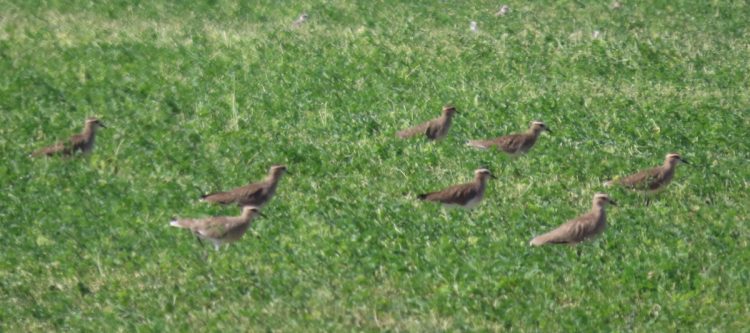
Leave a Reply